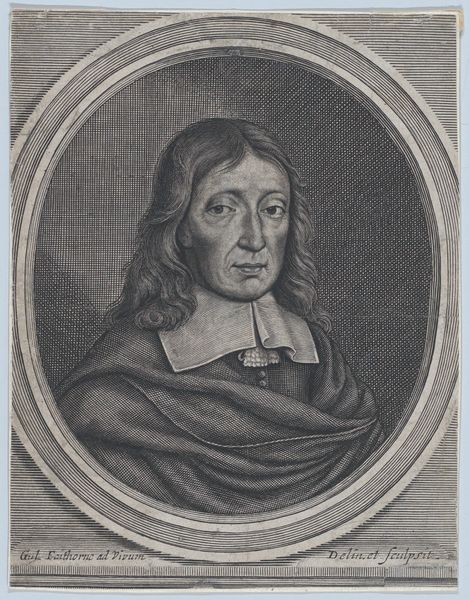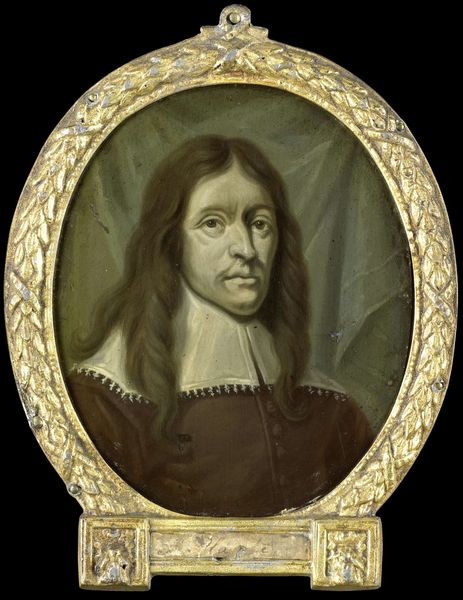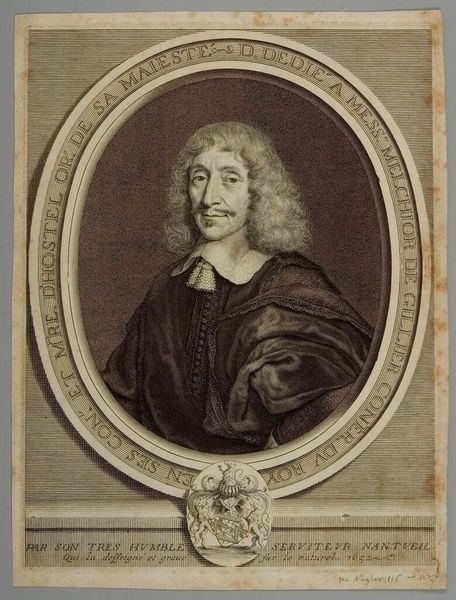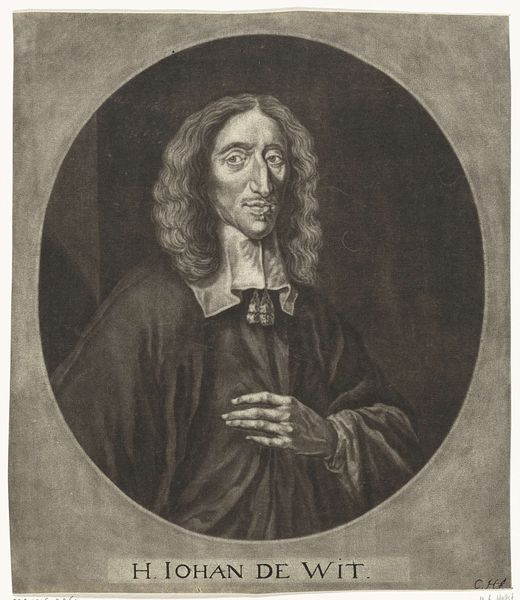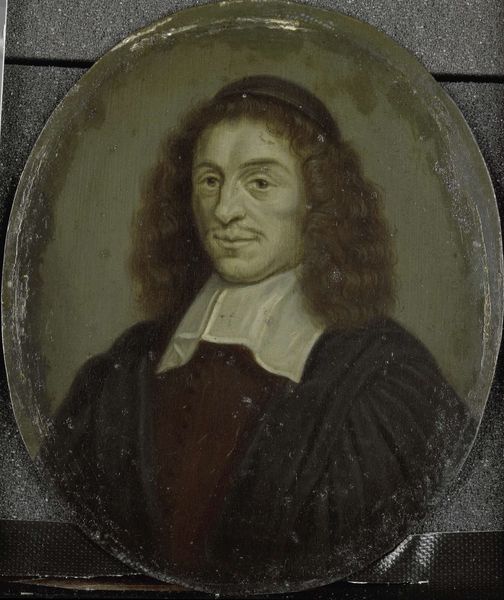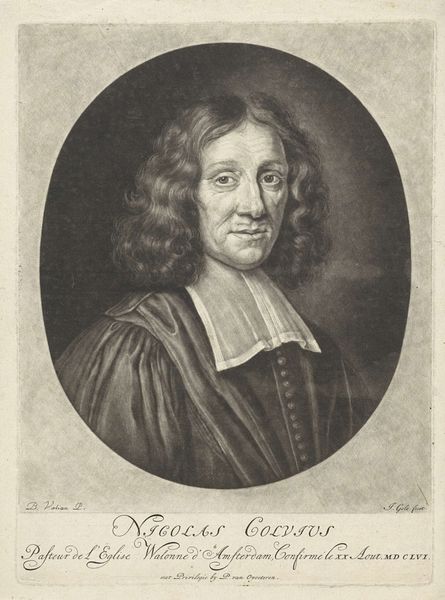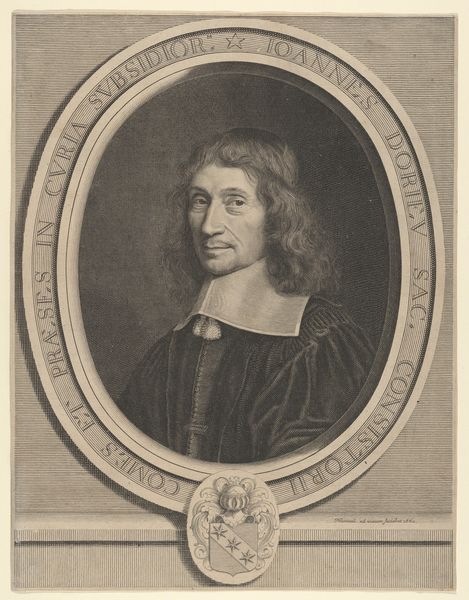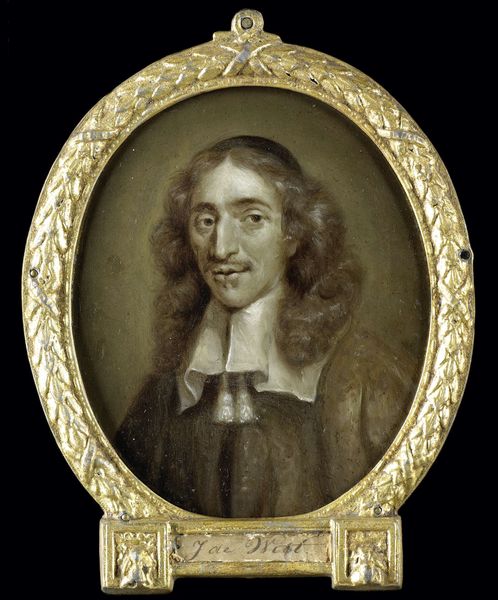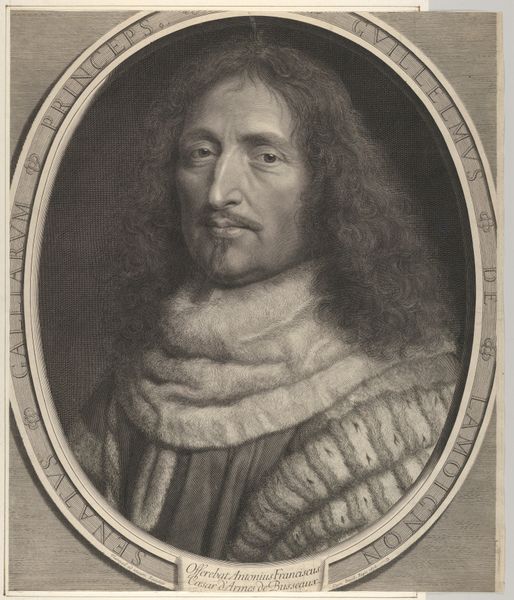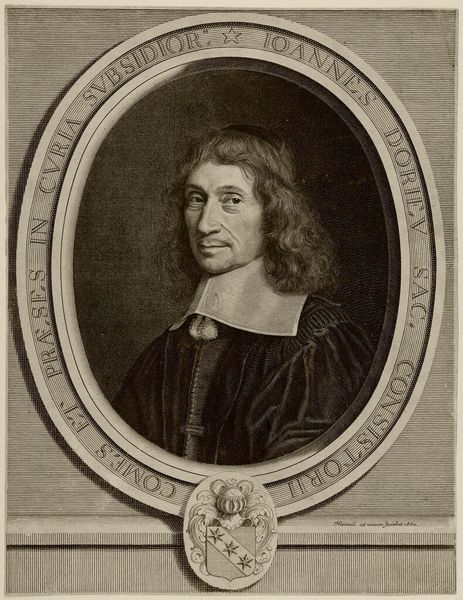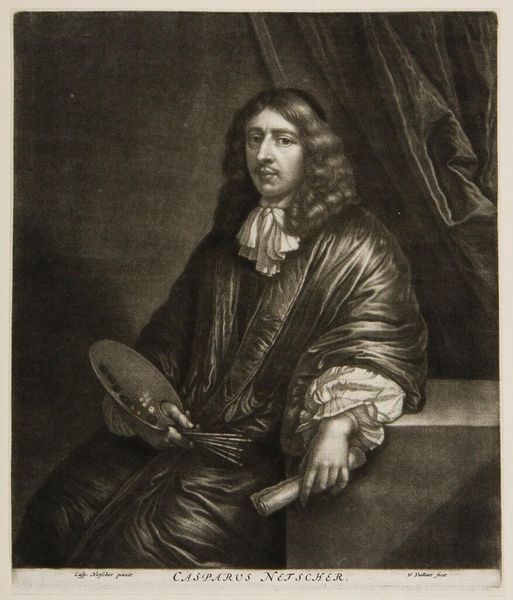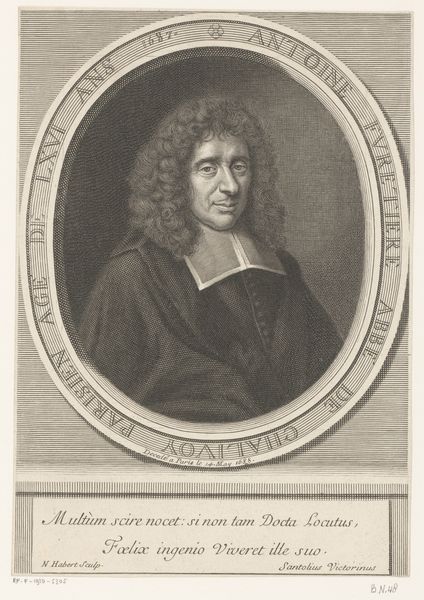
oil-paint
#
portrait
#
baroque
#
oil-paint
#
oil painting
#
realism
Dimensions: height 11 cm, width 9.5 cm
Copyright: Rijks Museum: Open Domain
Editor: We’re looking at "Jan Vos (1610-67), Amsterdam poet" painted in oil, likely between 1700 and 1732 by Arnoud van Halen. There’s a subdued, almost melancholy mood. The way the artist rendered the face feels so realistic. What can you tell me about it? Curator: What interests me here is not only the final product but also the social context in which such portraits were made. Oil paint itself was a commodity, available through specific trade routes. The patron, implicitly or explicitly, agreed to participate in an image economy, did they not? Editor: That makes sense! It was part of demonstrating their status. But the artist, van Halen, actually painted it sometime *after* Jan Vos died. Curator: Precisely. The material conditions extend beyond just the paint. Van Halen was essentially producing a commodity, a *reproduction* of a well-known poet, catering to a market eager for representations of cultural figures. Was this an act of artistic expression, or something closer to commercial reproduction of known cultural figure, or both? Consider too the labor of assistants in workshops versus a singular "genius." Editor: That’s a different way to look at it. So the *process* of creating a recognizable portrait was almost as important as the subject's likeness. The art as work itself. Curator: Exactly! It shifts the focus from idealized representation to the tangible circumstances surrounding the portrait’s creation. The act of commemoration is part of the art. Editor: Thinking about it that way changes everything I thought I knew about Baroque portraiture. Thanks!
Comments
No comments
Be the first to comment and join the conversation on the ultimate creative platform.
